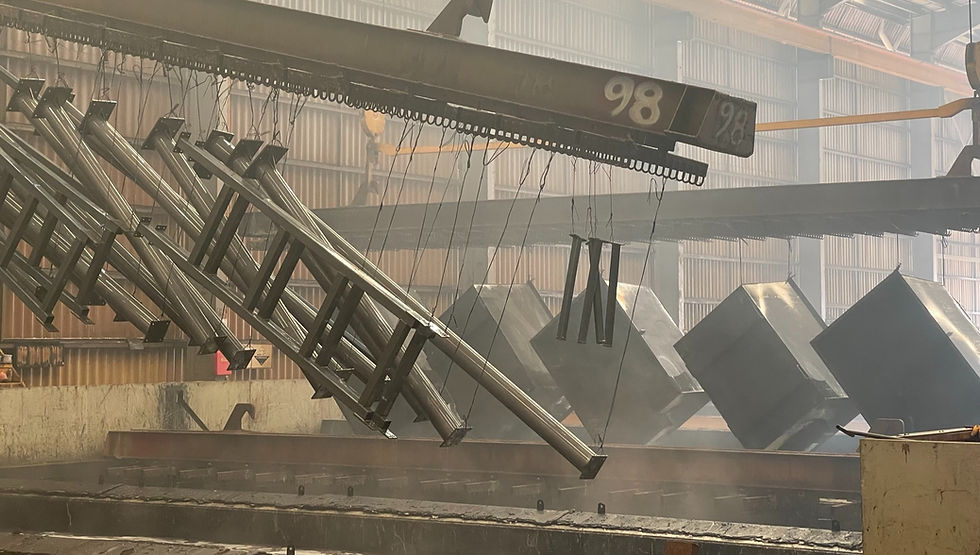The Steel Galvanising Process
- Invent Design

- Jul 31, 2023
- 2 min read
Updated: Apr 22

The steel galvanizing process applies a protective layer of zinc to the surface of steel to prevent corrosion. There are primarily two methods of galvanizing: hot-dip galvanizing and electro-galvanizing. Let's delve into each process:
Hot-Dip Galvanizing This is the most common and widely used method for galvanizing structural steel, especially for large steel components and structures. The process involves several steps:
a. Surface Preparation: The steel surface must be thoroughly cleaned to remove any contaminants such as oil, grease, dirt, and rust. This is typically done through a combination of chemical cleaning and abrasive blasting (usually sandblasting).
b. Fluxing: After cleaning, the steel is immersed in a flux solution to protect the surface from further oxidation before the galvanizing process. The flux removes any remaining oxides and provides a clean surface for the zinc to bond effectively.
c. Galvanizing Bath: The prepared steel is dipped into a bath of molten zinc, typically maintained at a temperature of about 450-460°C (842-860°F). The zinc bath consists of a mixture of pure zinc and other elements to control the coating thickness and appearance of the final product.
d. Metallurgical Reaction: When the steel is immersed in the molten zinc, a metallurgical reaction occurs between the zinc and the iron in the steel. This reaction forms a series of zinc-iron alloy layers on the surface of the steel, creating a tightly bonded zinc coating.
e. Quenching: After the steel is withdrawn from the zinc bath, the zinc coating solidifies rapidly. Sometimes, the steel is immersed in a quenching bath or sprayed with water to cool and solidify the coating more quickly.
Electro-Galvanizing
Electro-galvanizing, also known as electroplating, is a different method of applying a zinc coating to steel. Unlike hot-dip galvanizing, this process involves the use of an electric current to deposit zinc onto the steel surface. The steps involved in electro-galvanizing are as follows:
a. Surface Cleaning: Similar to hot-dip galvanizing, the steel surface is cleaned to remove any contaminants.
b. Acid Pickling: The steel is then immersed in an acidic solution to remove any remaining scale and rust, ensuring a clean surface for the zinc to adhere to.
c. Electroplating Bath: The steel is placed in an electrolyte solution containing dissolved zinc salts. An electric current is passed through the solution, causing zinc ions to migrate and deposit onto the surface of the steel as a thin layer.
d. Final Treatment: After electroplating, the steel may undergo post-treatment processes, such as chromate conversion coating or passivation, to enhance the corrosion resistance and appearance of the zinc coating.
Both hot-dip galvanizing and electro-galvanizing provide effective corrosion protection to steel, but the choice of method depends on factors like the size and shape of the steel components, the required thickness of the zinc coating, and the specific application of the galvanized steel.



Comments